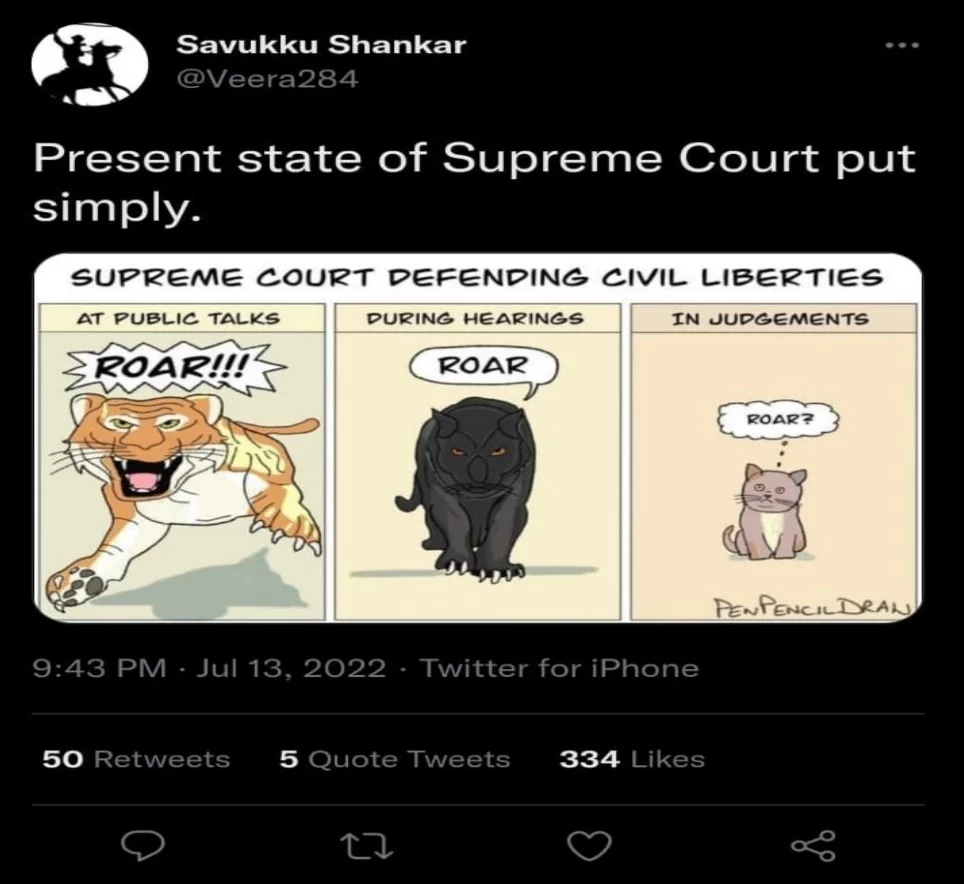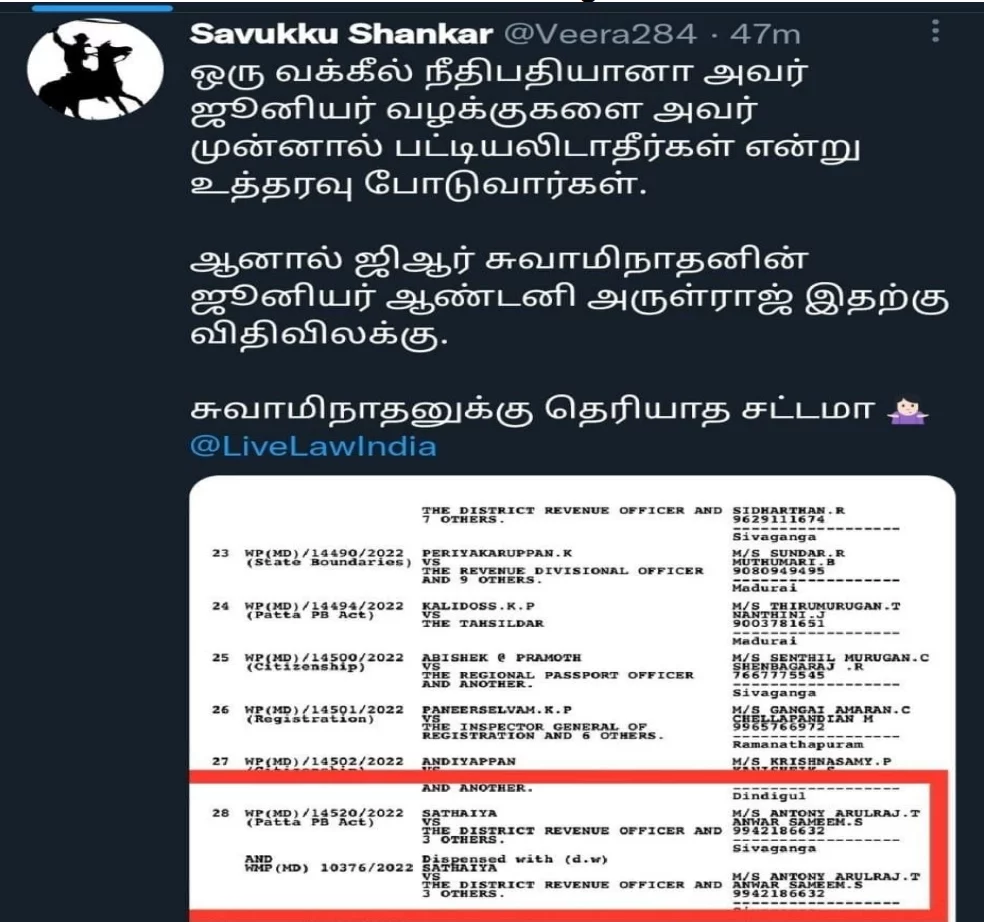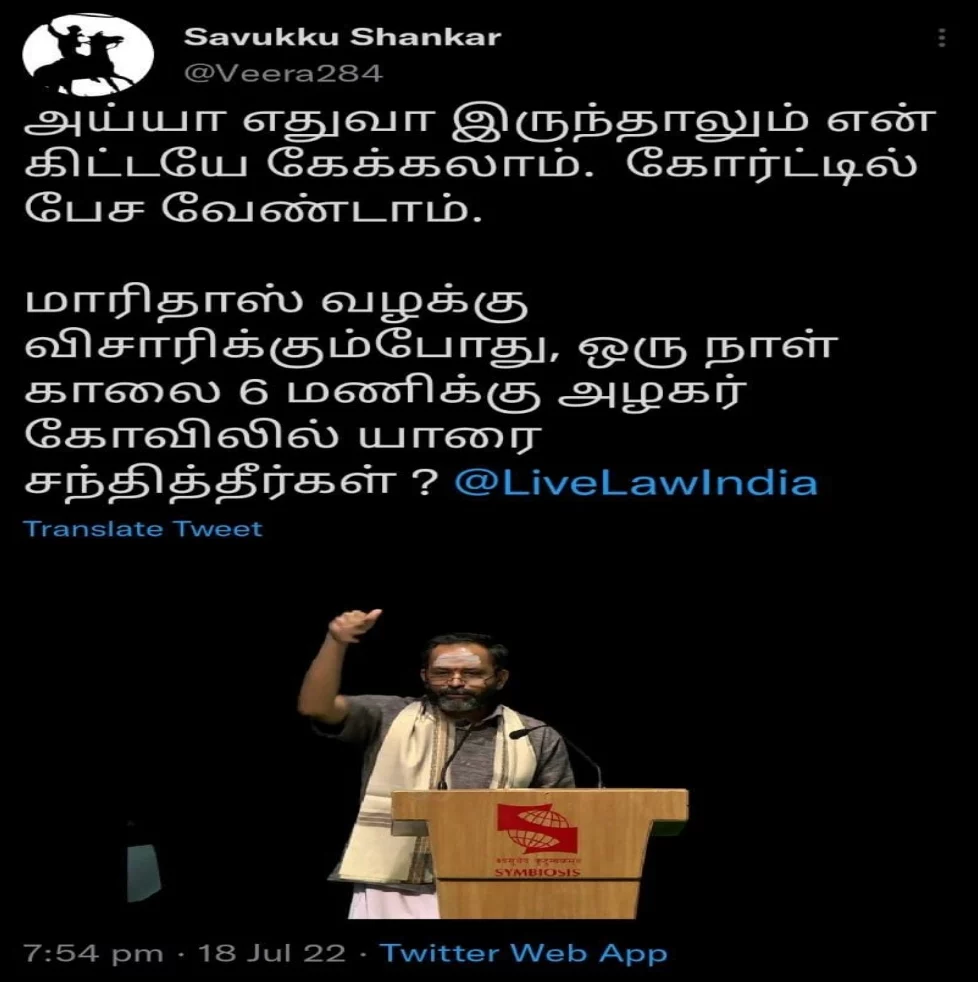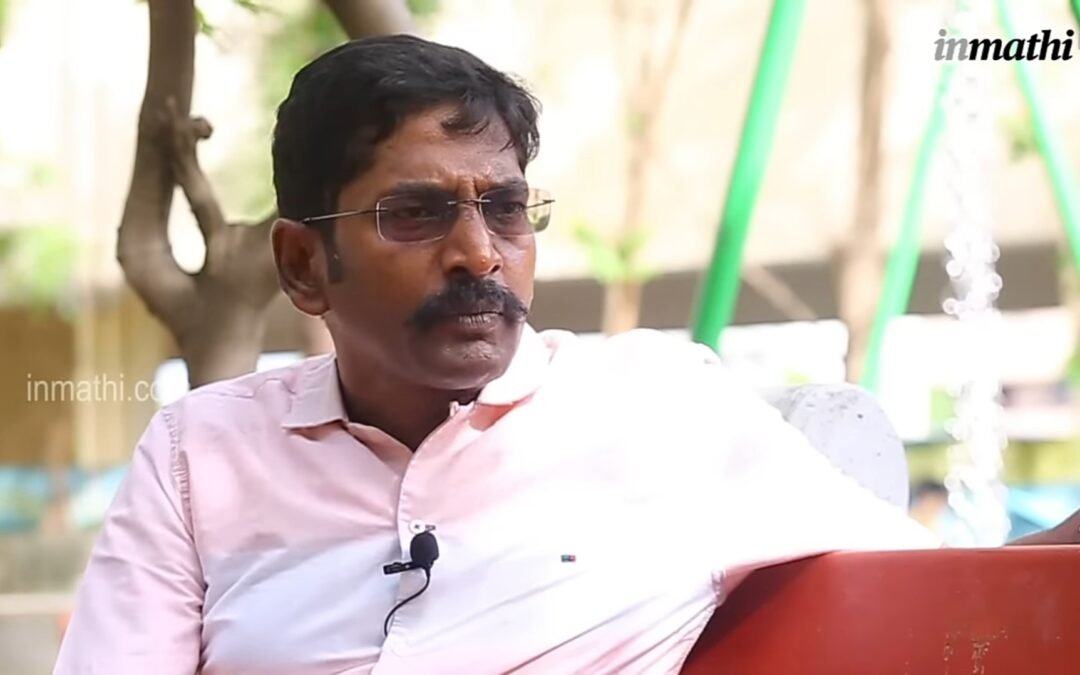Read in : தமிழ்
On Friday, the Madurai bench of the Madras High Court ordered the arrest of Savukku Shankar for contempt. A bench comprising Justice G R Swaminathan and B Pugalendhi refused to suspend the sentence which is normally given so the person who has been sentenced can go on appeal against such cases.
Shankar has been attacking the judiciary and has said many judges are acting with a Hindutva agenda.
On July 19, 2022, Justice G R Swaminathan of the Madras high court had drawn up a contempt petition against Savukku Shankar; no third party had petitioned. The aggrieved person was the judge himself. But the judgment on September 25 ordering his jail term was not based on this petition but some other remarks Shankar made on his website as well as in interviews in YouTube channels.
The petition says Shankar unsparingly attacks individuals and institutions including the judiciary. Justice Swaminathan of the Madurai bench of the Madras high court says strident criticism is fine but not defamatory vilification. He says Shankar has been attacking him for several months.
YouTuber Maridhas had cast doubts on the DMK government in the Gen Rawat chopper crash by saying the government had not sufficiently acted on “anti-national” forces, insinuating that the crash in Nilgiris was an attack by anti-national forces and the DMK government had to take blame for it. The DMK government had charged Maridhas with sedition and arrested him. Justice G R Swaminathan had dismissed the case and freed Maridhas.
Also Read: Savukku Shankar: More sinned against?
Savukku Shankar had tweeted that Justice Swaminathan had met someone at Azhagar Koil in Madurai before passing that judgement. Justice Swaminathan in his petition said Shankar was insinuating that someone had influenced him in passing that judgement.
The petition then cites Shankar’s tweet that Justice Swaminathan was hearing cases in which his former junior Anthony Arulraj was the lawyer. Normal practice is that judges recuse themselves in cases in which lawyers who were their juniors during their law practice are appearing. Shankar had tweeted this soon after the judge had said in open court that he was taking up a contempt petition against Shankar. The judge took this as yet another instance of the adversarial attitude of Shankar.



Three of the images given in the contempt petition filed by Justice G R Swaminathan supporting his contention that Shankar was maligning him and the judiciary with a personal motive
The judge then cited his record as a judicial officer. He cited statistics showing that he had disposed more than 70,000 cases since June of 2017. He said for the salary and perks he drew, he had worked hard. But Shankar who was drawing a salary from the Directorate of Vigilance and Anti-Corruption for ten years after suspension without doing any work had the audacity to question his record.
The judge noted that Shankar’s Twitter and other
accounts had been banned since social media operators must have received many complaints against him. But like an asura, he kept popping up using other names.
Imputing partiality, bias or improper motives to a judge is scandalization of the court and would be criminal contempt. — Justice G R Swaminathan
The judge concluded: “Imputing partiality, bias or improper motives to a judge is scandalization of the court and would be criminal contempt.” He then directed that the contempt case be filed.
A few days after the contempt case had been filed, Shankar said in Red Pix channel that the entire higher judiciary was riddled with corruption. Following this, on Aug 5, a bench comprising Justice G R Swaminathan and Justice B Pugalendhi issued a show cause notice to him asking why contempt proceedings should not be initiated against him for this comment that the higher judiciary was corrupt.
Read in : தமிழ்











